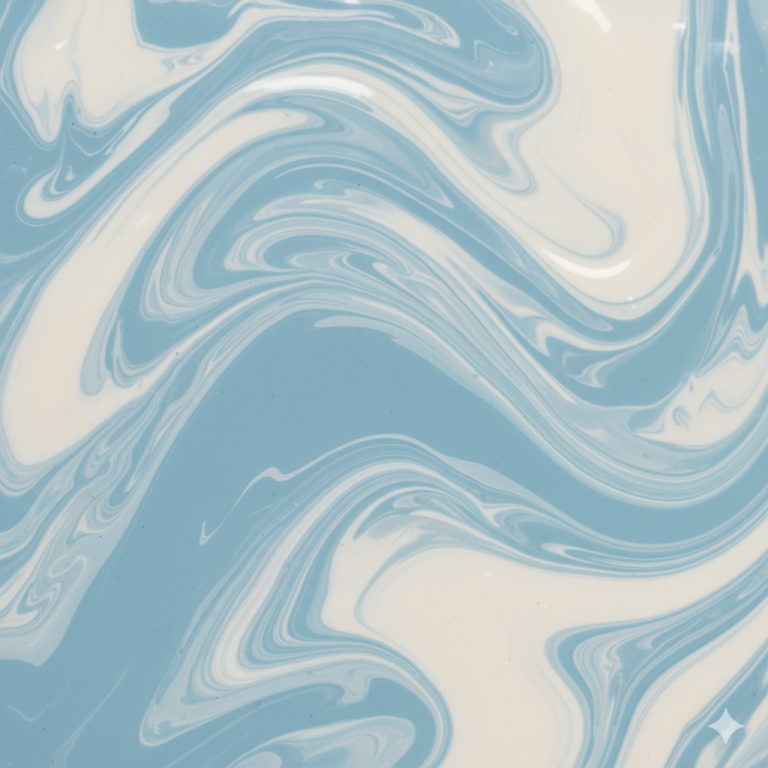What Color Represents Peace? Exploring the Symbolism of Peaceful Colors
Have you ever closed your eyes and tried to imagine the color of peace? It’s a profound question that artists, poets, and thinkers have pondered for centuries. Many people wonder if a universal “color” for peace even exists, or if its meaning changes with every culture and every heart. When we ask, “what color represents peace?” or “what is the color of peace?”, we are embarking on a journey into the psychology of color, ancient traditions, and our own inner landscapes. While there is no single answer, there is a beautiful spectrum of hues that humanity has consistently turned to for solace, harmony, and tranquility.
Why Colors Carry Meaning in Human Culture
Colors are more than just visual stimuli; they are a silent language understood across the globe. The field of color psychology explores how different shades can impact our moods, behaviors, and even physiological responses. For instance, warm colors like red can evoke feelings of energy and passion, while cool tones often bring about calmness and serenity. This connection is not arbitrary. It is deeply woven into our collective experience and cultural symbolism.
Throughout history, peace has been expressed visually through powerful symbols, rituals, and national flags where color choice is paramount. We also draw meaning from the natural world—the endless blue of a calm ocean, the gentle green of a new spring leaf, or the pure white of freshly fallen snow. These associations are so ingrained that they have become a shorthand for complex ideas. Therefore, it’s more accurate to say that there isn’t just one single “color of peace,” but rather a family of shades and tones that together create a palette of tranquility.
White — The Universal Color of Peace
If one had to answer the question, what colour is peace?, the most frequent and globally recognized answer would be white. This connection is ancient and multifaceted, touching upon history, religion, and everyday life. When we consider what color means peace in its most direct form, white stands out for its powerful symbolism of purity, innocence, and new beginnings.
Historically, white has been the unambiguous color of truce. Waving a white flag on a battlefield signals a cessation of hostilities and a desire for negotiation, a practice recognized for centuries. The white dove, often depicted carrying an olive branch, is another potent symbol rooted in the biblical story of Noah and has become an international emblem of peace. In many cultures, white is also the color of significant life ceremonies, such as weddings, where it represents unity and the pure start of a new life together.

The religious ties to white are equally strong. In Christianity, white is associated with holiness, divinity, and the resurrection of Christ, signifying ultimate spiritual peace. Similarly, in Buddhism, white represents purity, liberation, and the enlightened mind, free from the stains of worldly suffering.
In our daily lives, we instinctively use white to create a sense of calm and order. Minimalist interior design often relies on white walls and furniture to create an uncluttered, peaceful environment. We wear crisp white clothing to feel fresh and composed, and we offer white flowers like lilies and roses as gestures of sympathy and serenity.
Blue — Calmness, Harmony, and Spiritual Peace
Closely following white, blue is one of the most prominent colors that represent peace. Its connection to tranquility is deeply rooted in both psychology and our natural environment. From a psychological perspective, blue is known to have a calming effect on the mind and body, capable of lowering heart rates and reducing stress. It is a color of non-confrontation, inviting reflection and gentle introspection.
This calming effect is mirrored in nature. The vast, serene blue of the sky on a clear day or the deep, rhythmic blue of the ocean instills a sense of stability and expansive calm. It’s a color we can get lost in, allowing our anxieties to dissolve into its endless depth.

This symbolism has been adopted in important cultural contexts. The iconic blue helmets worn by United Nations Peacekeepers are a deliberate choice, using the color to signify their mission of maintaining harmony and security. In many Mediterranean and Middle Eastern cultures, the deep blue of the “evil eye” or Nazar is not a symbol of malice but a protective talisman used to ward off negativity and bring peace to the wearer. Whether it’s in a flag, a piece of jewelry, or the paint on a bedroom wall, blue consistently serves as a visual anchor for inner and outer peace.
Green and Lavender — Healing Colors of Peace
While white and blue are often the first to come to mind, green and lavender offer a more restorative and healing dimension to the palette of peace. When we ask what is the color of peace, we can also look to the hues that mend and soothe the soul.
Green is inextricably linked to nature, growth, and renewal. It is the color of life itself. Spending time in a lush forest or a green garden has a proven restorative effect, reducing mental fatigue and promoting a sense of well-being. This is why green is frequently used in environments dedicated to healing, such as hospitals and wellness centers, to create a restful and recuperative atmosphere. It symbolizes a healthy balance and a deep-seated peace that comes from being connected to the earth.

Lavender, a softer and more delicate shade, brings its own unique qualities. The color is synonymous with the fragrant flower, which has been used for centuries in aromatherapy for its calming properties. Lavender is associated with relaxation, stress relief, and a gentle quieting of the mind. It is a shade of peace that is less about grand declarations of truce and more about personal, intimate moments of tranquility. It represents the quiet peace found in meditation, a warm bath, or simply a moment of mindful breathing.
Cultural Interpretations of Peaceful Colors
In the West
In Western cultures, white is the predominant symbol of peace, largely due to its historical use as the color of truce and its religious associations with purity. Blue is also widely recognized, valued for its calming psychological effects and its connection to stability and harmony.
In the East
In many Eastern traditions, the symbolism can differ. In Islam, green is a particularly sacred color, associated with paradise and life, and is therefore seen as a color of peace and hope. While white is also important, representing purity in faiths like Buddhism, green often carries a deeper spiritual resonance.
Indigenous and Global
Many indigenous cultures draw their symbolism directly from the natural world. Colors like sky blue, earthy browns, and leafy greens often represent a holistic peace—a state of being in harmony with the environment and the spiritual world. These interpretations remind us that peace is not just the absence of conflict but a state of profound balance.
Peaceful Colors in Religion and Spiritual Practices
- Christianity: White is paramount, symbolizing holiness, innocence, and divine peace. The liturgical phrase “peace be with you” is often exchanged in settings adorned with white.
- Hinduism/Buddhism: While white signifies purity, the vibrant saffron or yellow robes worn by monks represent detachment, renunciation, and the path to achieving inner peace and enlightenment. It is the color of a mind that has found tranquility by letting go of worldly attachments.
- New Age/Wellness: Modern spiritual practices often utilize a palette of soft, pastel tones to create serene environments for meditation and healing. Light blues, gentle greens, soft lavenders, and warm whites are used in meditation rooms and wellness spaces to help quiet the mind and foster a peaceful state.
Peace in Everyday Life — Using Color for Calm
- Interior Design: There’s a reason so many people choose calming colors for their homes. Bedrooms are often painted in soft blues or greens to promote restful sleep. Living spaces with a foundation of white or neutral tones feel more open, clean, and mentally uncluttered.
- Clothing: Our fashion choices can be a form of self-expression and mood regulation. Wearing a crisp white shirt can make one feel composed and ready for a fresh start. A soft blue scarf or a lavender accessory can be a small, personal touch that brings a sense of calm throughout a busy day.
- Digital & Branding: Notice the colors used by your favorite meditation or wellness apps. Tech companies and brands in the wellness space deliberately use palettes of blue, green, and white to build trust and create a calming user experience from the moment you open the app.
FAQs: Answering Common Questions
What Color Represents Peace?
While there is no single color, white is the most universally recognized color that represents peace, symbolizing purity, innocence, and truce. Other key colors for peace include blue (calmness), green (harmony with nature), and lavender (relaxation).
What colors represent peace?
The primary colors that represent peace are white, blue, green, and lavender. White symbolizes purity and truce, blue represents calm and harmony, green signifies nature and healing, and lavender is associated with relaxation and stress relief.
What colour is peace?
Using the British spelling, the most direct answer is white. It is the most widely recognized international symbol for peace, used in truce flags and by peace doves.
What color means peace?
White is the color that most directly means peace, signifying the end of conflict and a new beginning. Blue is a close second, meaning serenity and calm.
What is the color of peace?
The answer to this truly depends on culture and personal experience. While white is often cited universally, for some it might be the green of a forest, the blue of the sea, or the yellow of a monk’s robe.
Colors that represent peace in modern design.
In modern design, peace is often represented by a muted, minimalist palette. This includes off-whites, soft grays, pastel blues, sage greens, and gentle lavenders. The focus is on creating a clean, uncluttered, and calming aesthetic.
Conclusion — Finding Your Own Color of Peace
While cultures and traditions point us toward a beautiful spectrum of tranquil hues, the true color of peace is ultimately a personal one. It is the color that quiets your mind, soothes your spirit, and makes you feel whole. It might be the deep blue of a twilight sky, the pure white of a clean page, or the vibrant green of a beloved houseplant. We encourage you to take a moment and explore which colors bring you a sense of calm and harmony.
To continue your journey into the world of symbols and wellness, explore more resources on bemyhealer.com, such as articles on crystals for peace.


